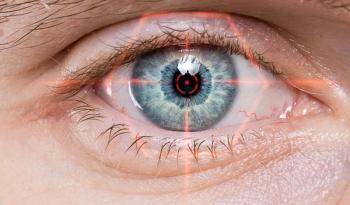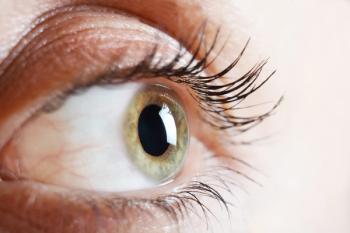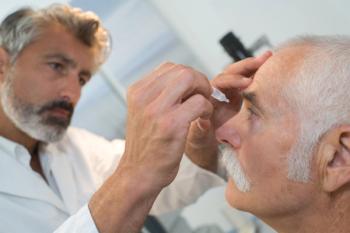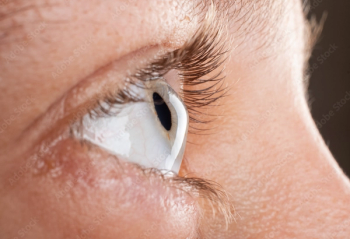
In preclinical models, investigators at Brigham and Women’s Hospital uncovered a novel mechanism underlying the development of diabetic cataracts that undermines current hypothesis

In preclinical models, investigators at Brigham and Women’s Hospital uncovered a novel mechanism underlying the development of diabetic cataracts that undermines current hypothesis

Glaucoma 360's co-founders and co-chairs Adrienne L. Graves, PhD, and Andrew G. Iwach, MD, speak with Ophthalmology Times® on what attendees can expect from the upcoming meeting, being held Feb. 2-4 in downtown San Francisco.

On this week's episode of the NeuroOp Guru video blog, Andy Lee, MD, and Elizabeth Fortin, MD, discuss the comparison of the range of lumbar CSF pressure in adults with normal CSF pressure and in idiopathic intracranial hypertension.

Vial will be supporting RecensMedical with the phase 3 clinical trial for its Ocu-Cool system.

Let us know how familiar are you on the approval process for biosimilar drugs compared with new drug applications to the FDA. The poll will be open until February 28, 2023.

Several strategies exist to improve safety of injections for patients.

According to the company, it is planning to hold an end-of-phase 2 meeting with the FDA to discuss the results.

The Phase 2 clinical trial will evaluate darovasertib as monotherapy in neo-adjuvant and adjuvant settings in primary, non-metastatic uveal melanoma (UM) patients.


Based on their findings, an international team of researchers is discouraging the application of atropine as a standard therapy for trabeculectomy surgery.

The intent of the award is to recognize early-career researchers who have exhibited excellence in research, as well as their fundamental scientific discoveries, concepts and novel technologies which have led to, or have the promise of leading to, clinical application.

A University of Houston researcher has been awarded a $1.6 million grant to help restore vision loss in patients with the rare disease that causes blindness.

All events in the 2023 annual gathering, scheduled for February 2 to 4 in downtown San Francisco, California, will take place at a new venue, The Westin St Francis San Francisco on Union Square.

A team of researchers have found that STOC tomography enables unprecedented views of eye structure.

Company says the products will give its customers more choices and flexibility when considering treatment options for their patients and the specific needs of their practices.

After comparing two techniques of corneal transplant tissue preparation, research shows a newer, faster technique is safe and effective.

These awards will help to advance the winner’s work and research in their respective fields in retinal surgery and age-related macular degeneration (AMD).

Patient-tailored techniques result in predicable outcomes for patients.

Researchers used obesity as a model to accelerate and exaggerate the stressors experienced by the body throughout life.

According to the FTC, the money will be used to compensate consumers the company allegedly lured with deceptive offers.

The study advances the understanding of the leading cause of visual impairment in adults.

Coherus plans to file a Biologics License Application for FYB203 later in 2023 in preparation for an anticipated 2025 launch.

The Genentech Award is intended to provide early-career underrepresented minority investigators with an opportunity to explore novel and innovative research project ideas.

The United States Department of Justice originally filed the lawsuit in December 2021 on behalf of an elderly quadriplegic patient, alleging that Tempe, Arizona-based Barnet Dulaney Perkins Eye Center was requiring patients with mobility disabilities to hire third-party medical transport and transfer assistance for outpatient surgical procedures. American Vision Partners was named as a codefendant.

Researchers developed nanoparticles able to penetrate the neural retina and deliver mRNA to the photoreceptor cells whose proper function makes vision possible.

Study results show evidence for augmentation, offering hope to patients.

Investigators found that all patients had similar single surgery success rates but that minority patients had significantly worse vision outcomes and were more likely to have multiple retinal breaks.

In a conversation with David Hutton of Ophthalmology Times®, Ferhina S. Ali, MD, MPH, discussed the real world use of faricimab in the IRIS Registry during a presentation this week at Hawaiian Eye in Kauai Hawaii, focusing on the use of faricimab for the treatment of neovascular AMD and diabetic macular edema.

Topical formulation of TTHX1114 has potential to accelerate the healing of epithelial defects

Timely access to effective diagnosis and cross-linking is key to positive outcomes